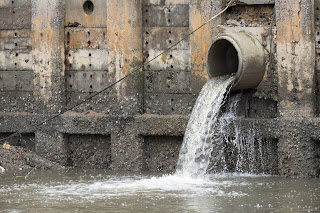Craft beer brewing (commonly known as “microbrewing”) serves an ever-growing market for high-quality, small-batch beer and ciders. There are more than 7,000 brewpubs, microbreweries and regional craft breweries in the United States, with 1,000 expected to be added in 2019. In 2017, they produced over 750 million gallons of beer, about 10% of total U.S. beer production.
In contrast to the major brewery operations
that make brands like Coors and Budweiser, many craft breweries are located in
condensed residential areas. Some are even integrated with restaurants and/or
organize tours of their brewing facilities wherein customers get to learn about
the brewing process from the brewers themselves. One thing that most people
don’t know is that microbreweries, just like industrial breweries, create large
volumes of wastewater per unit of beer produced. In fact, the average
microbrewery produces almost 10 gallons of wastewater for each gallon of beer
produced. That’s more than 7.5 billion gallons of wastewater per year. Brewery
wastewater is laden with high levels of organics including bacteria and yeast,
undigested carbohydrates, and chemicals including ethanol, aldehydes and
ketones. All of these constituents add
to what is called the “organic carbon load” of the wastewater. In addition to this
organic carbon load, brewery wastewater sometimes contains suspended and
colloidal solids, excess nitrates/ammonia, and microbial activity.
Many cities require that microbreweries
treat their wastewater on-site prior to discharge to the sewer, or face increasing
fines and penalties. This is well-articulated in a 2016 news piece by CBC
news in this video, which describes Vancouver’s wastewater infrastructure
struggling with the load from the city’s many craft breweries. Because of this,
microbreweries seek new ways to reduce wastewater volumes and contaminant loads.
The challenge for any small business is doing so without disrupting operations
and breaking the bank.
BLEST offers solutions to these problems for microbreweries, including engineering consulting, permitting services, design, and wastewater treatment (including the BioLargo AOS system). We understand the wastewater issues that brewers contend with, and we are able to provide custom-engineered treatment systems suited for microbrewery needs, including:
- COD/BOD treatment systems
- Denitrification Systems – MBBRs, Packed Bed Bioreactors
- Lamella Style Clarifiers
- Dissolved Air Floatation (DAF) Systems (fine solids removal)
- Potable water treatment to remove chlorine, solids, lead, bacteria, etc. prior to brewing
- AOS for influent water treatment and AOS for bacteria control
- Water capture, treatment and reuse systems
Additionally, many microbreweries in brew
pubs prefer to start up in “historic” structures. These structures often
require environmental, structural and safety related upgrades to meet newer
building codes. BLEST is positioned to
provide a package of engineering services that can address these issues as well
as services and products provided to the BioLargo family of companies.
The national market for on-site waste water
treatment for the craft brewing industry is, according to our internal market
research, approximately $200 Million. The total market for overall wastewater
treatment for industrial facilities is of course orders of magnitude larger
than that. Targeting a small fraction of the total market provides significant
revenue potential and an opportunity to serve a growing market segment local to
all BioLargo geographic locations. Even within the immediate areas of
BioLargo’s Westminster and Oak Ridge offices, there are several dozen micro-
and craft breweries, many of which are in need of wastewater treatment
solutions.
What is a
BioLargo Spotlight?
It’s an
exciting time at BioLargo. We’re moving fast, and it can be difficult to keep
our stockholders and the investing public informed of our progress. In light of
this, we will be posting a series of short articles titled “BioLargo
Spotlight”, highlighting certain business activities and other important
information in between our required SEC filings. Of course, these do not
replace our public filings, which contain more complete information than can be
delivered in this forum, and thus we urge you to carefully read and rely on
those filings for definitive information, and to review our risk factors and
caution regarding forward-looking statements. We are optimistic about our
business as we work hard to continue to grow and ultimately generate profits
for our stockholders.
Legal
Disclaimer
Our
attorneys remind us that while we believe these developments are important and
that these small victories could add up and lead to big victories, at this
stage they do not rise to the level of an official material disclosure. As the
size and magnitude of these developments become material, we will naturally
report that information in an 8-K and our regular SEC filings



No comments:
Post a Comment